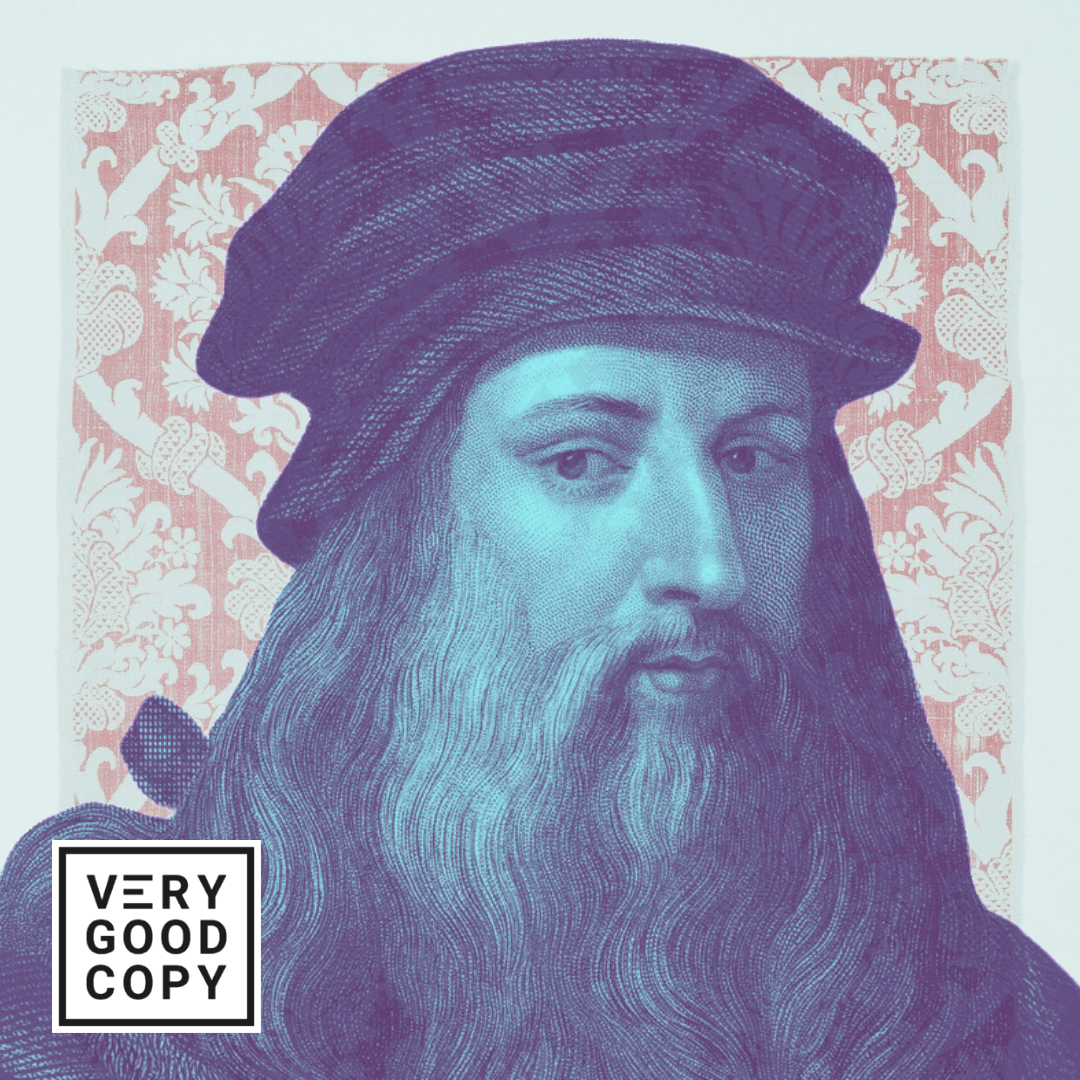
“Squaring a circle” is an ancient mathematical problem:
How do you turn a circle of a certain area into a square with the exact same area? It’s hard to do — especially with only a ruler and a protractor — because Pi is an irrational number.
Leonardo da Vinci spent decades exploring ways to square a circle.

Never miss a VeryGoodCopy Micro-Article: SUBSCRIBE
It was an obsession — one of many he developed over the course of his life — and he was criticized for it, censured by art critics who believed he wasted his time on hobbies that took him away from his true gift and contribution to humanity: painting.
But in his biography of da Vinci, Walter Isaacson argues that his time away from painting was, in fact, the source of his genius. After reading the book, I listened to Isaacson sum up this point on the Art of Manliness podcast:
“[Leonardo] did anatomy drawings, he did math, squaring of a circle, he did engineering, tried to build flying machines,” Isaacson said, “and some art critics will say if he hadn’t wasted his time doing that, he would’ve painted more paintings. Well sure, he might have painted more paintings, but he wouldn’t have painted the Mona Lisa — he would not have been Leonardo da Vinci.”
It’s true, da Vinci pursued dozens of disciplines:
He was a painter, of course, but also a sculptor, a musician, a mathematician and an engineer, an inventor, an anatomist, a geologist and cartographer, a botanist, a writer. Other things, too.
He was the original Renaissance man, a genius, yes, but not because of his computing capacity (like Einstein, for instance). He was a genius because he was insatiably curious about anything and everything — and he was able to connect his learnings to his art.
For example, he studied vision, optics and perspective — basically, how the human retina perceives shadows and colors — and he used this knowledge to craft the Mona Lisa’s famous interactive smile, which turns on and off as your eye wanders across her face.
“Leonardo da Vinci was not one of these people with grand processing power,” Isaacson said, “but he was somebody who had a curiosity, and a sense of observation… and that is something you and I can relate to better.”
In fact, not only can you and I relate to it — we can emulate it. We can live our lives the way da Vinci lived his: with an open mind, bouncing between interests, between questions, curious, ever curious, constantly observing, constantly connecting.
This is how you become an ordinary genius.
It’s a lifestyle.

LEARN TO PERSUADE
✅ Join thousands of email subscribers
✅ Less than 0.4% of readers unsubscribe
✅ Never miss a Micro-Article or -Interview
✅ Get instant email access to VGC's founder
✅ Be first in line to get new, free Micro-Courses
DRAYTON BIRD
Global Creative Director @ Ogilvy & Mather
BEN SETTLE
Email Marketing Master
KIM KRAUSE SCHWALM
A-List Direct Response Copywriter
RYAN BONNICI
Forbes 26th Most Influential CMO
SCOTT DIKKERS
Founding Editor @ The Onion 🧅
LISA PIERSON
Partner @ CopyHackers Agency
JUSTIN WELSH
SaaS Advisor & Writer
GODARD ABEL
CEO @ G2.com
DAVID GARFINKEL
A-List Direct Response Copywriter
JORGE SELVA
Director of Growth @ Help Scout
ADAM GOYETTE
Chief Marketing Officer @ Help Scout
TYLER J. KOENIG
Conversion Copywriter
TOMMY WALKER
Editor-in-Chief @ Shopify Plus & CXL
JASON VANA
Founder @ SHFT Marketing
JUSTIN BLACKMAN
Founder @ Pretty Fly Copy
CAMILLE TRENT
Managing Editor @ MarketerHire
NIKHIL NARAYANAN
Creative Director @ Ogilvy & Mather
EDEN BIDANI
Copywriter @ Greenlight Copy
MARK KILENS
VP of Content @ Drift
































